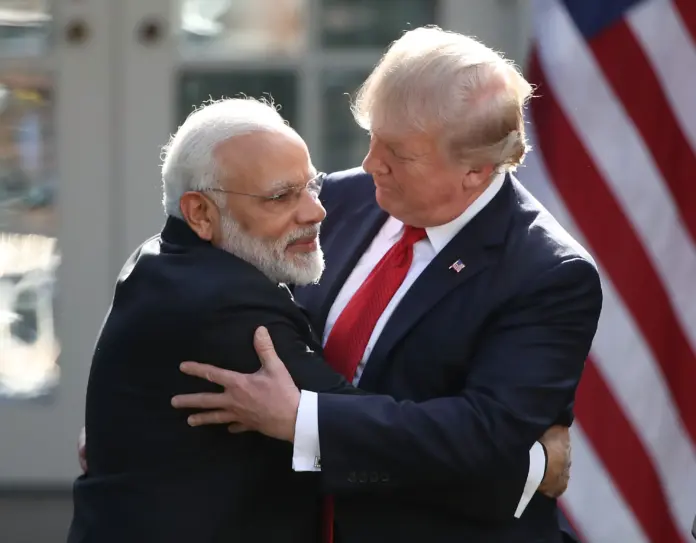By refusing to bend under Trump’s punitive tariffs and asserting diplomatic independence, Narendra Modi has shifted the balance of power. Where others yield, India holds firm.
A Birthday Call, Laced with Strategic Intent
On September 17, as Narendra Modi marked his 75th birthday, a carefully timed call arrived from Donald Trump. Officially, the US President called to offer birthday wishes. Unofficially, he was seeking to break a deadlock in trade negotiations that have turned into a geopolitical standoff. This sweetened exchange barely conceals the bitterness underlying the US–India commercial rift, centered around punitive tariffs that now reach as high as 50% on key Indian exports.
The self-declared “friendship” between the two leaders appears increasingly strained. Trump, fixated on correcting a $45 billion trade deficit, is facing a counterpart who sees these measures as direct interference in a sovereign power’s economic strategy. Behind the smiles, a trade war simmers.
A Calculated Diplomacy: Putin, Xi, and India’s Long Memory
Modi’s moves are anything but impulsive. At the Shanghai Cooperation Organization summit earlier this September in Tianjin, he stood shoulder to shoulder with Vladimir Putin and Xi Jinping. That image alone spoke volumes. India signaled it would not play along with Western ultimatums—particularly absurd ones like halting Russian oil and arms imports, which remain critical to India’s regional strategy vis-à-vis China.
Trump’s attempt to wield tariffs as a tool of coercion has run aground against Modi’s patient and calculated resilience. Rather than respond with aggression, India replied with silence—and then disdain. Modi pointedly ignored four successive calls from the US President, a symbolic slap in an age where diplomacy often happens on social media.
“Trump Doesn’t Understand India”
“Donald Trump and his advisors don’t understand India,” says economist Santosh Mehrotra. They treat India like a second Japan—compliant, subordinate to NATO structures. Grave miscalculation. Post-colonial India is non-aligned by doctrine, multipolar in outlook, and proudly nationalistic in tone. It rejects vassalage, even when wrapped in the velvet glove of strategic partnership.
India has laid down three non-negotiable red lines: freedom to buy oil from whomever it wants, the right to engage with a multipolar network of allies (including Russia), and absolute protection for its agricultural sector, which employs over 40% of its workforce. It is this last line that Trump has targeted, demanding agricultural market access in exchange for tariff relief.
Agriculture: A National Totem and Washington’s Trap
Often underestimated by Western analysts, Indian agriculture is politically sacred. To undermine Indian farmers is to provoke a potential revolt. Modi knows this, and will not gamble on rural stability. As long as Washington insists on imposing its agro-industrial exports, no meaningful trade progress can be expected.
Ajay Srivastava, former WTO trade negotiator for India, puts it plainly: “India is ready to reduce tariffs in less sensitive sectors. But unless the US shows flexibility, there will be no deal.” Tariffs won’t be lifted through pressure tactics.
A Realignment, Not a Surrender to China
The India–China photo ops shouldn’t fool anyone. Modi’s India is not inching closer to Beijing out of affection. As Srivastava reminds us, “China is a purely transactional partner. There is no strategic warmth.” India is pursuing a third way: an autonomous, sovereign role as a pivotal power—courted by many, controlled by none.
At the center of this strategy are the tariffs. By refusing to give in to American economic coercion, India has demonstrated that firm resolve can outweigh empty diplomatic flattery. Washington, blinded by its own assumptions, now finds itself flying to New Delhi, hat in hand.
A Losing Game for Washington?
Modi’s method has exposed the short-sightedness of Trump’s populist strongarming. India held firm, and now it’s America that’s adjusting. This is no minor standoff—it is a strategic reassertion. In this clash between American bluster and Indian long-term realism, it appears the Modi doctrine is prevailing.



